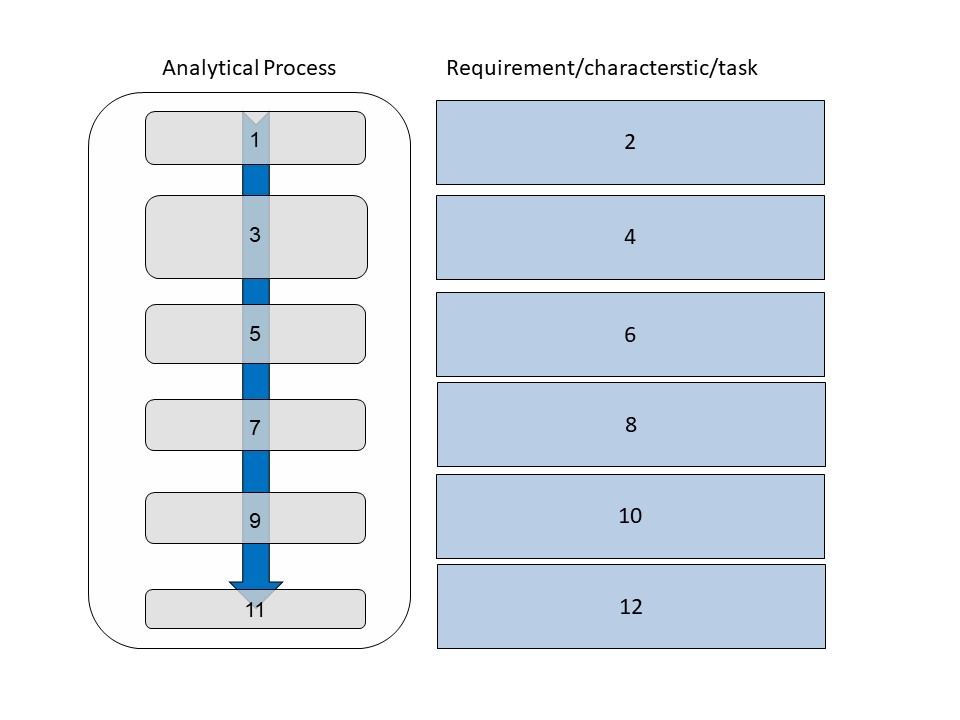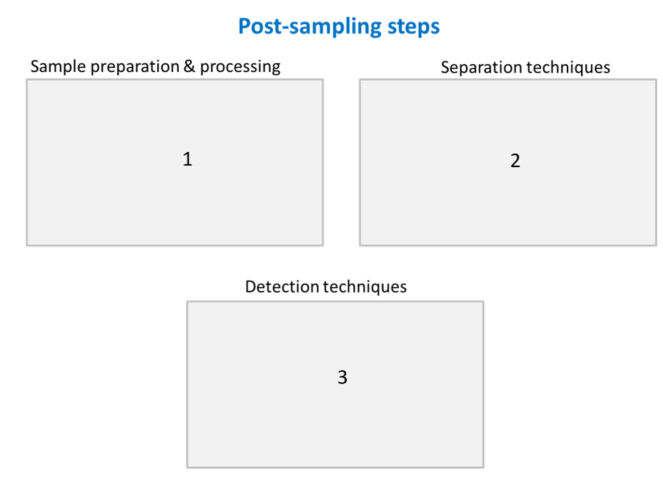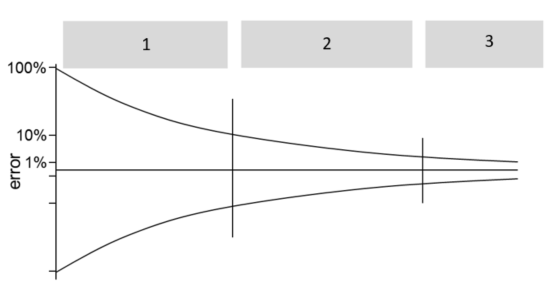Multiple choice: Check your answers by clicking on them.
Fill in the gap: Toggle down to check your result.
1. Bring the steps of an analytical process as well as its characteristics into the right order by matching the numbers with the words below.

a) data evaluation, b) documentation and final conclusions, c) sample processing, d) qualitative or quantitative analysis, e) statistics, f) conclusion on content, g) evaluation of statistical significance, h) representative and homogeneous, i) sample preparation, j) sampling, k) report, l) experiment/ analysis
Solution
1j, 2h, 3i, 4c, 5l, 6d, 7a, 8f, 9e, 10g, 11k, 12b
2. Match the provided „sample preparation & processing“, „detection“ or „separation techniques“ with the examples below.

a) optical methods, b) extraction, c) sonification, d) thin-layer chromatography, e) liquid chromatography, f) lyophilization, g) gel electrophoresis, h) atomic spectroscopy, i) homogenization, j) photometry, k) gas chromatography, l) mass spectrometry
Solution
1bcfi, 2degk, 3ahjl
3. The provided images depict different levels of accuracy and precision, which can be transferred to actual analytical experiments. Match the numbers in the boxes with the description below.

a) low accuracy and low precision, b) high accuracy and high precision, c) low accuracy and high precision, d) high accuracy and low precision
Solution
1b, 2d, 3a, 4c
4. Match the numbers in brackets with the words below.
Homogenization is the (1) and therewith homogenization of the sample, e.g. by mechanical methods like (2) or (3). The sample changes its (4) properties but maintains its general (5).
a) ultrasonic, b) disruption, c) analysis, d) shaking, e) milling, f) physical, g) chemical, h) physical properties, i) chemical composition
Solution
1b, 2a, 3e, 4f, 5i
5. Bring the steps of a solid phase extraction into the right order:
[Loading of sample onto the column], [preconditioning of the SPE column], [elution of analytes], [column is washed to remove impurities like e.g. salts/ analytes remain on the column], [sample compounds interact with the stationary phase of the column]
Solution
[preconditioning of the column], [loading of sample onto the column], [sample compounds interact with the stationary phase of the column], [column is washed to remove impurities like e.g. salts/ analytes remain on the column], [elution of analytes]
6. Match the numbers in brackets with the words below.
With liquid-liquid extraction compounds contained in one solution are transferred into (1), which is (2) with the (3). This method separates compounds based on their (4).
a) solubility, b) the gas phase, c) feed solution, d) another solvent, e) immiscible, f) miscible, g) analyte
Solution
1d, 2e, 3c, 4a
7. During sampling and sample analysis procedure different errors may occur, which however affect the experimental outcome to different extents. Match the numbers in the boxes with the words, which corresponds to the extent of the experimental error depicted in the graph underneath.

a) analysis, b) sampling, c) sample preparation
Solution
1b, 2c, 3a
